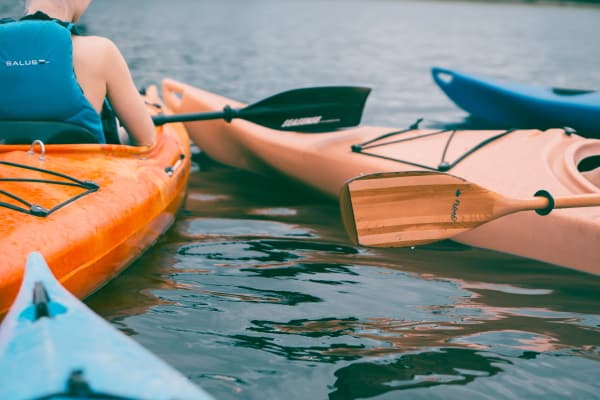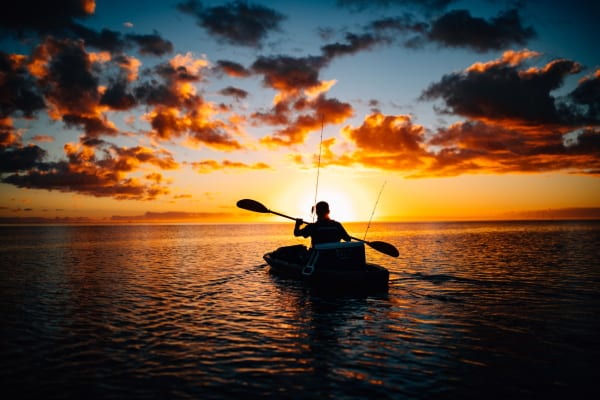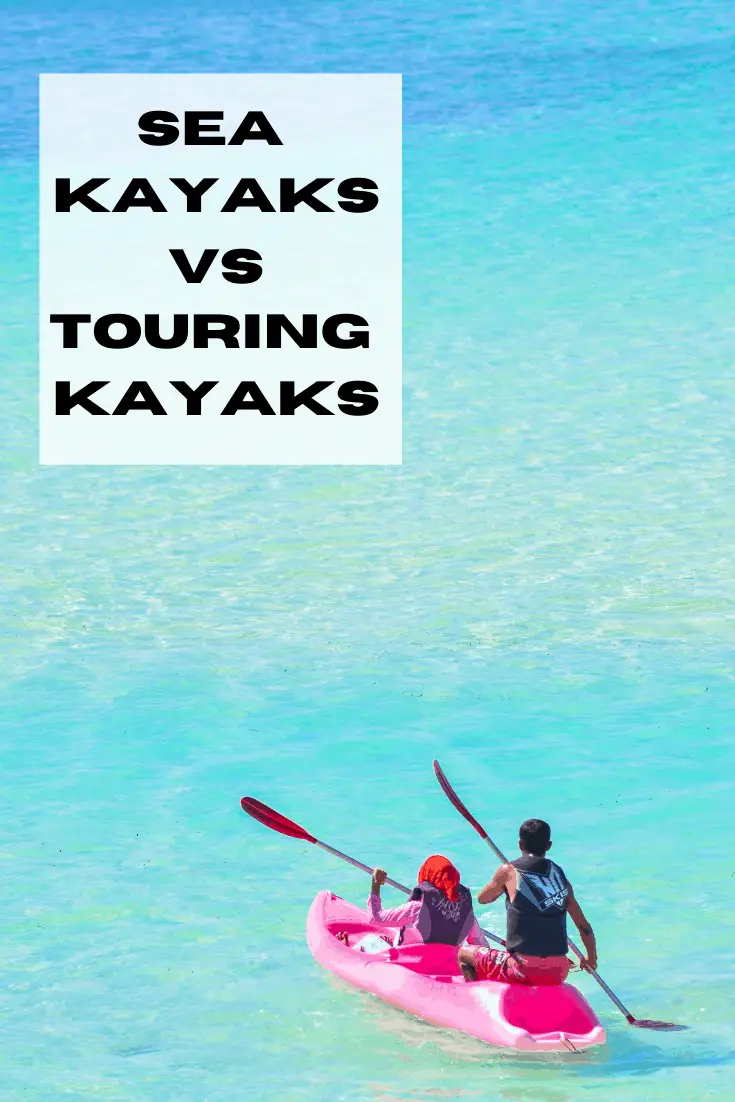
The terms sea kayaks and touring kayaks are often used interchangeably. This can make things confusing when you’re looking to buy a kayak.
So are sea kayaks and touring kayaks the same thing? Sea kayaks and touring kayaks are often the same but it depends on how the manufacturer wants to brand them. Some manufacturers will design their hulls specifically with waves and open waters in mind and they brand these kayaks as sea kayaks.
Other manufacturers make kayaks that can easily handle waves and open waters and they brand these kayaks as touring kayaks. Often-times these manufacturers simply brand these kayaks as touring kayaks so as not to scare off landlocked kayakers from buying. Furthermore, some manufacturers will name their larger recreational kayaks touring kayaks and these kayaks should not be used for coastal kayaking trips.
These differences can often make buying a kayak even more confusing than they need to be. Luckily, figuring out which one to buy isn’t hard to do once you know what features to look for. In the rest of this post, I’ll let you know exactly what these features are.
Table of Contents
What Are You Doing With Your Kayak
Before getting into what type of sea kayak you should buy, we have to talk about what you’ll be doing on the sea. Are you planning on taking your kayak from the beach, through the waves , out onto the open water and then back in again an hour later? Will you be launching your kayak into the ocean so that you can spend a day or two traveling down the coast? Are you looking to use your kayak to ride the waves in?
What you want to do with your kayak will determine what type of “sea kayak” you need. I used the term in quotes there because you may not really need a sea kayak at all. Let’s take a further look at sea kayaking.
Kayaks for Quick Trips From The Beach
Taking a kayak to the beach for a few hours can be a lot of fun. It can also be tough. One wave while you’re trying to launch your kayak can flip it.
For this reason, it’s best to use a sit-on-top kayak. This way, when your kayak flips you won’t have to worry about draining it out. You can take your time launching your kayak and if it takes you a few attempts it won’t matter much.
On the other hand, if you were to try doing this with a sit-inside kayak, you might have to bring your kayak back in from the beach over and over again to drain it. Also, once you’re out on the water, you’ll have to worry that one flip could leave you scrambling to right your kayak, drain it, and get back in before another wave comes.
The kayak shouldn’t be too long either. I’d recommend something in the 10-foot range. You’ll need to quickly launch this kayak from the beach and a big and heavy kayak isn’t going to allow for this. In the end, what you really want for this type of sea kayaking is a simple sit-on-top recreational kayak.
The advantages of this are as follows:
- The open-top design will make it safe and easy to launch without having to worry about water getting into the kayak.
- Your kayak will be lightweight and easy to carry.
- The kayak won’t have a rudder that could break if the kayak washes up on the beach.
Now, let’s take a look at some of the other scenarios that might involve a sea kayak.
Fishing From a Kayak in The Ocean
A kayaker looking to do some fishing in the ocean will also probably want to get a sit-on-top kayak. This type of kayak is great for fishing because it offers up an open deck that makes working with fishing poles as well as fish a lot easier.
This being said, you’ll want to spend a little more money to get a kayak that is actually rated as a sea kayak. Get one specifically made for fishing as these kayaks will be a little wider and will offer more stability than a sea kayak that is meant more for long-distance traveling.
These kayaks will typically have lengths of around 15 feet. Go a lot shorter than this length and you might not have the stability you need out on the ocean. Go a lot longer and you’ll have a lot of kayak to paddle and maneuver with while fishing.

Some people also look for sea kayaks that can be operated with the use of foot pedals. These types of kayaks are great for anglers who want to move their kayak without having to worry about putting their fishing rod down.
A sea fishing kayak should have lots of additional storage space for carrying gear and it should have a comfortable chair. These kayaks should also have a rudder on them to make it easier to control the kayak in strong winds and currents. If you’re worried about the rudder getting damaged, you could always buy a sea kayak with a retractable rudder.
Other features to look for are quick-access paddle storage areas, rod holders, fishfinder mounts, and dry storage areas for extra clothing and gear. All of these features can add up so expect to pay well over a $1,000.00 for a sea kayak that you can use to go fishing with.
Coastal Touring on Calm Days
Are you looking to cruise along the coast and maybe visit some of the nearby islands on a kayak? If you don’t have a lot of experience out on the ocean, don’t think about getting a kayak that can stand up to large waves or incredibly rough seas. The reason I say this is because you shouldn’t be paddling in these types of conditions yet.
Instead, you’ll want a nice stable sea kayak with a rudder and a slightly more aggressive hull than that of a recreational kayak. This will allow for more efficient paddling. You’ll be putting more miles on this kayak than you would if you were on a short jaunt out into the sea so you’ll need something that you can feel comfortable on for hours at a time.
These kayaks can be sit-on-top kayaks but you could also opt for a sit-inside kayak. The caveat to this is that you should be comfortable with wet exits before you take a sit-inside kayak into the ocean. You should also be comfortable with rescuing your kayak and getting back into it without having to take the kayak back to land first.
Coastal Touring Rough Seas
It might sound counterintuitive, but when you’re on rough waters, you’ll want a kayak that has less stability built into it. The reason for this is you don’t want to be sitting too high in the water. A kayak that sits deeper in the water will feel a little more “tippy” but it will be able to move with waves more easily.
This means that when buying a kayak for rough seas, you’ll want an aggressive and more narrow design. These kayaks will be harder to master so you’ll need to have experience with recreational kayaks before you take on a kayak like this.
Before moving up to a kayak like this, you’ll want to be exceptionally comfortable with sea rescues, wet-exits, and swimming in general. You’ll also want to have friends with similar aptitudes as this isn’t something you should ever go and do alone.
A kayak built for rough seas will often be built from more durable materials. This can drive up the price quite a bit.
Expect prices to start out over $2,000.00.
Coastal Racing
Once you get more comfortable with sea kayaking, you might want to move up to a kayak that you can be more aggressive with. These kayaks are often sit-inside kayaks with low centers of gravity.
A kayak used for navigating rough seas and racing will be a lot less stable than other kayaks. It will be more narrow and it will be longer. On the plus side, you’ll cut through the water more easily and you’ll be able to move a lot faster.
Another feature of coastal racing kayaks is that they will usually be built from lightweight, yet highly durable materials. You’ll be looking at fiberglass kayaks and carbon fiber kayaks and you’ll certainly pay a premium for them. These kayaks can sell for several thousand dollars and can even reach 5 figures.
Summing It All Up
People looking to spend an hour or two on a kayak they’ve launched from the beach should probably get a sit-on-top recreational kayak. Folks looking to spend a long day kayaking in the ocean should get a kayak rated as a “sea kayak”. This could be a sit-on-top kayak or a sit-inside kayak.
Anglers will want a sit-on-top kayak to make fishing easier. A pedal type kayak might be easier and more convenient.
Kayakers looking for a more challenging trip into the sea should get a thin and long kayak rated as a “sea kayak”. Before doing this, you should have a lot of experience and training and you should be a strong swimmer.


